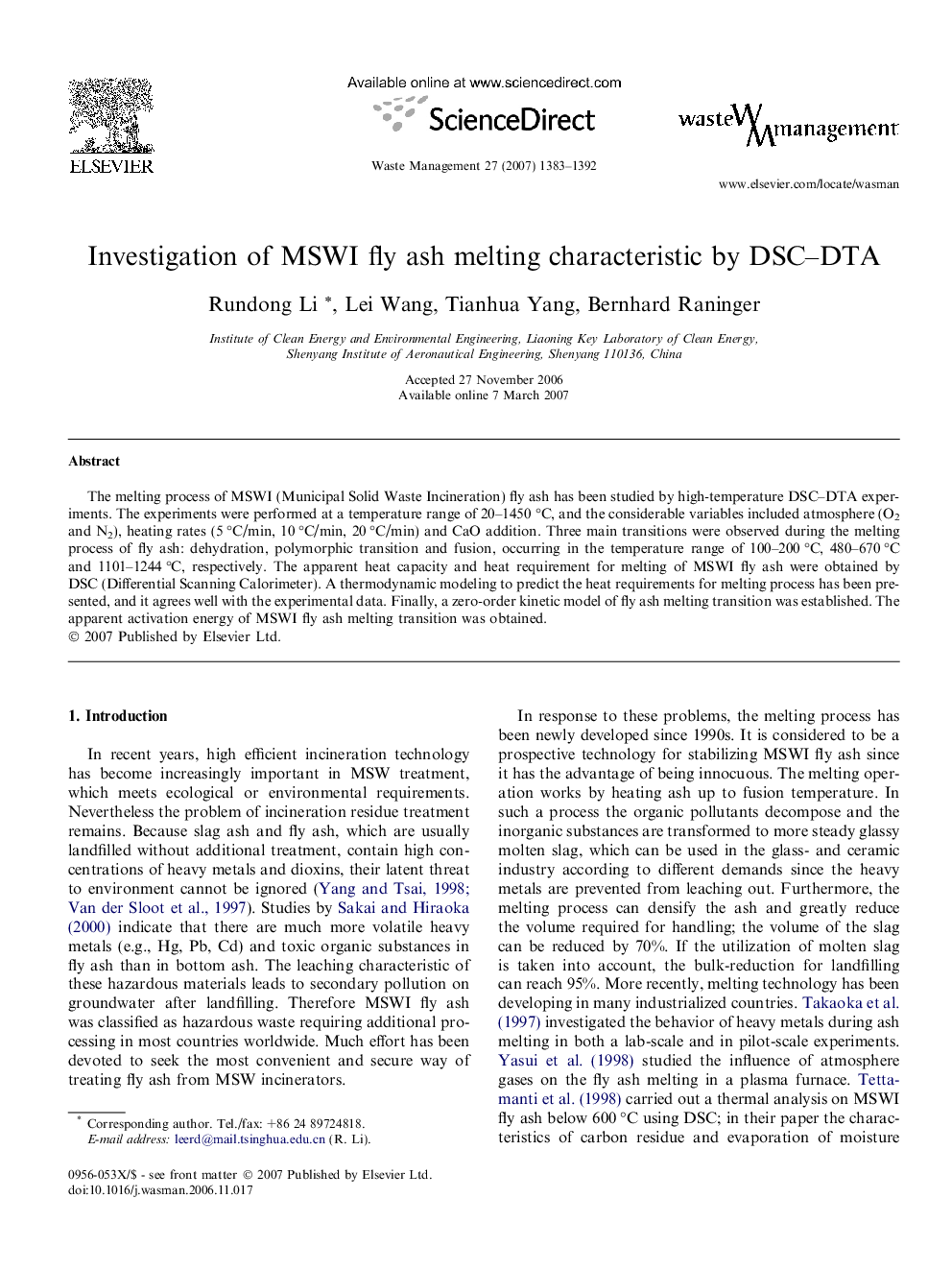| Article ID | Journal | Published Year | Pages | File Type |
|---|---|---|---|---|
| 4473443 | Waste Management | 2007 | 10 Pages |
The melting process of MSWI (Municipal Solid Waste Incineration) fly ash has been studied by high-temperature DSC–DTA experiments. The experiments were performed at a temperature range of 20–1450 °C, and the considerable variables included atmosphere (O2 and N2), heating rates (5 °C/min, 10 °C/min, 20 °C/min) and CaO addition. Three main transitions were observed during the melting process of fly ash: dehydration, polymorphic transition and fusion, occurring in the temperature range of 100–200 °C, 480–670 °C and 1101–1244 °C, respectively. The apparent heat capacity and heat requirement for melting of MSWI fly ash were obtained by DSC (Differential Scanning Calorimeter). A thermodynamic modeling to predict the heat requirements for melting process has been presented, and it agrees well with the experimental data. Finally, a zero-order kinetic model of fly ash melting transition was established. The apparent activation energy of MSWI fly ash melting transition was obtained.
